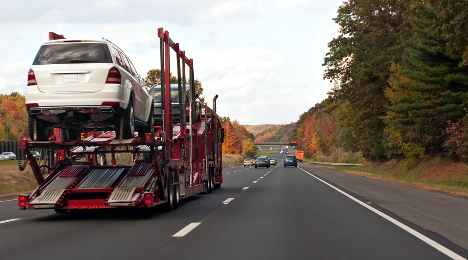Car Haul Capacity: ‘The Wolf Actually Showed Up’

If you need convincing of the capacity challenges facing the vehicle transportation industry, consider what United Road Services president and chief executive officer Kathleen McCann had to say during a keynote address at last month's NAAA/IARA/CAR Conference in Las Vegas.
As part of her presentation on “What’s Ahead in Car Haul … Capacity, Compliance, Customer Experience and Collaboration,” McCann posed this question amid sharing some market dynamics impacting capacity (including a growing supply of vehicles, among others): “So, are we short car haul capacity? As currently operating, I would say yes.
“And lest we tire of the historical warnings about capacity, driver crises and trucking crises, etc., and we sound a little bit like the boy crying wolf, I just tell you to remember, the wolf actually showed up,” she said. “It’s a real issue; we’re seeing it in real time.”
And it’s one that could continue as the “pipeline” of vehicles continues to grow given such factors as bulked-up used- and new-car sales. McCann said that, currently, research indicates the industry is approximately 3,000 car haulers short.
The deficit is, “not about manufacturing,” McCann would later emphasize.
“We know the truck manufacturers have been super busy, but there’s no challenge in getting trucks built, and the trailer manufacturers have additional capacity. So there isn’t a constraint there,” she said.
“So, if we’re short this many trucks and we know it’s not a manufacturing problem, then the real capacity issue is drivers,” McCann continued.
The overall shortage of drivers in the trucking industry (for car haul and otherwise) range from 35,000 (per an estimate from former Kansas Gov. Bill Graves, the president of the American Trucking Associations) “to much higher, depending on how you actually de ne a population of drivers,” she said.
Looking at some of the reasons for the “downfall,” McCann pointed to a few, including “extreme” driver turnover, an economic recovery that pushes demand, an aging driver population, a generational gap when it comes to interest in trucking, and ramped-up regulatory environment.
An additional factor, she said, is the requirement from customers to strap most new cars instead of chain them.
This, “combined with the increased tractor size due to the emissions systems have essentially reduced our load factor by half — which is one, because you can’t move half-a-car — and so we’re talking about a 10- to 15-percent capacity hit from that,” McCann said.
“These combined factors have been serving to increase the number of drivers that must be hired each year (in the general trucking industry) from 1 million in 2013 to 1.4 million by 2020,” she added. “That’s an estimated 40-percent bump and a very intimidating number.”


